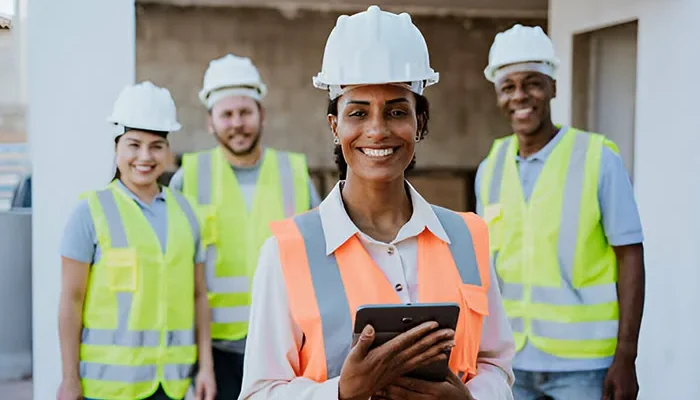Introduction to Skilled Training in Construction
The construction business is a key part of building up infrastructure and is always pushing for progress and new ideas. The need for skilled professionals grows greatly as construction projects get more complicated. To meet this need, people must be willing to go through a lot of training. Training is the cornerstone for those aspiring to build a career in construction. Not only does it help you learn important professional skills, but it also helps you develop the critical thinking and problem-solving skills you need for big projects. Professionals who have been taught well are very useful in a field where accuracy and safety are very important.
The Necessity of Continuous Learning
New technologies, updated building codes, and creative building methods are all affecting the construction industry and changing it quickly. Professionals must keep learning in order to stay useful. Workshops, seminars, and online courses for training offer more than just basic learning. This makes sure that construction workers can use the newest technologies in their daily work. Actively seeking information makes people better at what they do and helps the construction industry grow as a whole.
Types of Training: On-the-Job and Formal Education
There are different types of construction training that are designed to fit different learning styles and job stages. Apprenticeships and training on the job are two unique hands-on ways for workers to learn directly from teachers with more experience. These real-life experiences are very helpful for understanding how complicated daily construction chores are. Along with this hands-on method, there is formal schooling in construction theory that can be found in technical schools and online platforms. The future will be shaped by the rise of blended learning models, which combine digital and face-to-face teaching. This mix of skills trains people in all areas, giving them both technical knowledge and real-world experience.
Certifications that Matter
In the building field, certifications are used to show how skilled and dedicated someone is. Credible programs, like Occupational Safety and Health Administration (OSHA) standards and Leadership in Energy and Environmental Design (LEED) certifications, show that a professional is committed to following the rules of their field and using environmentally friendly methods. With these credentials, workers can improve their chances of getting a job, ask for higher pay, and take on more responsibility. Certifications help people and raise the status of professionals, which promotes a culture of excellence in the business as a whole.
The Impact of Training on Safety
Safety is very important on building sites because risks can put workers in danger and cause projects to be held up. Getting the right training is important to lower risks and make sure that safety rules are followed every day. According to research, workers who have been trained are better able to spot possible dangers, take steps to avoid them, and handle emergencies effectively. Safety training fosters a culture of vigilance and care, reducing the incidence of workplace injuries. Long-term safety training saves lives and resources, boosts team happiness and productivity, and ends with a successful project.
Enhancing Quality Through Skilled Training
Quality in construction jobs shows how skilled and dedicated the workers are. Training makes sure that high standards are met, which helps professionals do great work on projects and in their skill. Workers learn to pay close attention to details and strive for greatness through structured training programs. When building projects go well, they often show how skilled training directly leads to good results. Also, putting in place quality management methods makes the effect of training on performance even clearer.
Future Trends in Construction Training
Adding technology to building training is the next big thing that needs to be done. Virtual reality (VR) and artificial intelligence (AI) are two new technologies that are changing the way people learn. VR lets you learn in a way that feels like you’re really there, and it simulates real-life situations so that workers can safely practice their skills. AI gives data-driven views into how well training works and how well workers do their jobs, which makes it easier to create personalized training programs. As these technologies improve, they will make building training easier to get, faster, and more useful. This will help create a workforce that is tech-savvy.
Conclusion
In the end, getting skilled training is necessary to move up in the construction business. Professionals improve safety and project quality and secure their place in a competitive field that is set to grow in the future by continuing to learn and getting useful certifications. Skilled training creates a setting for learning and high standards. This allows people to come up with new ideas, lead the way, and have an impact on the future of construction, building structures that can withstand changes in time and regulations.
Land Clearing Business: Turning Over a New Leaf in Sustainability









Comments